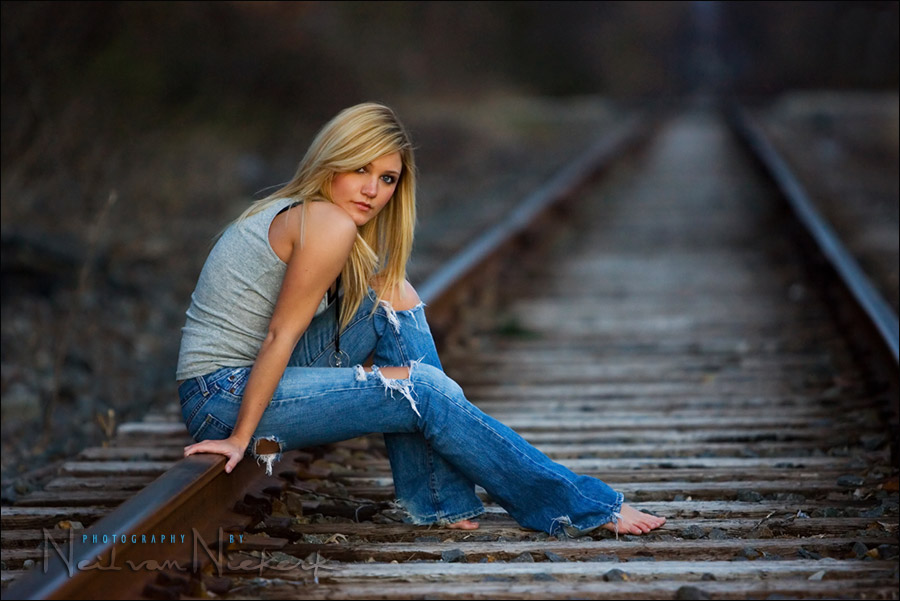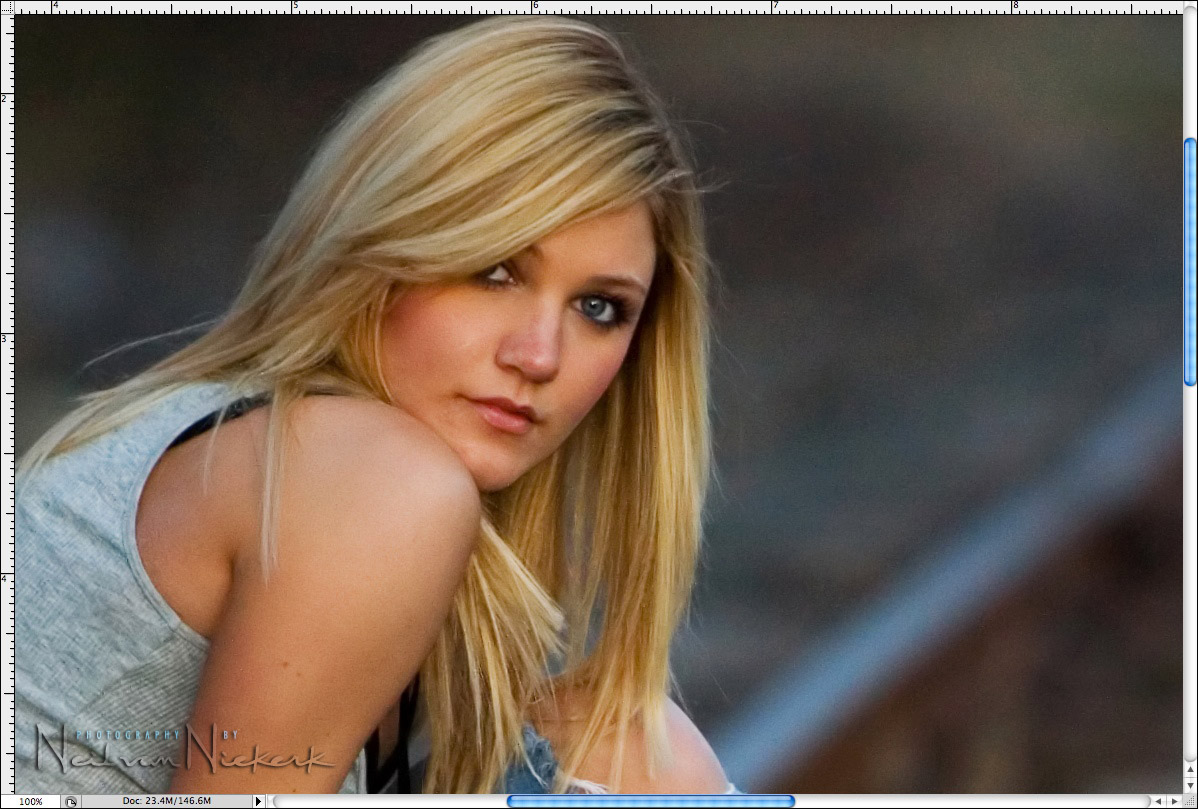
Digital noise reduction software: Neat Image
The best way to deal with digital noise in photographs is to start with having a correctly exposed photograph taken by a high-ISO capable camera. Then digital noise mostly isn’t an issue unless you start pushing the upper limits of what the camera is capable of. But sometimes (hopefully only sometimes), you have to deal with an under-exposed photograph from an older camera … and then the digital noise becomes apparent. Then we have to use software to clean the image up.
For those times when I do have to deal with an image with noticeable noise, and need to correct for it, then I use Neat Image. I’ve tried several software programs, including Noise Ninja and Topaz DeNoise, but prefer the results from Neat Image.
Here are 100% screen-grabs of the image above, to show you what the noise looked like, and how Neat Image handled this instance. In Auto. That’s important to me. I like software where the defaults already work and make sense. I’m just too busy to go delving deeply into every bit of software I end up using … so it’s a real time saver when a bit of software just works without effort. So while the software offers all types of controls and fine adjustments for those who want to fine-tune their settings for optimal results, I really like it that the defaults give impressive results.


This photo was under-exposed by a stop, and was shot with the Canon 1D mk2N.
1/160 @ f2.8 @ 800 ISO; a touch of on-camera TTL fill-flash.
Related articles
- More articles on digital workflow
- More articles on digital imagining
What a difference! I need this software just in case. Thanks for the link Neil.
Neat Image seems to work better then even Noise Ninja although I haven’t really unleashed all of its capabilities yet.
Lekker shot!
I have found LR 3 does a great job with noise, have you tried it or are separate programs better.
I have been using NeatImage for some years now. I pass every single picture I take through it.
I took the time to build my own noise database with my cameras: for each body and each ISO I have a preset noise level; see in NeatImage Help how to do it. This way I can exactly reduce noise even when I don’t have a very smooth area in the picture for the Auto mode to work with. Although the Auto mode is usually very good, preparing and using the preset modes saves the scanning time for each picture.
Also because I KNOW that the noise algorithm is the right one, I don’t need to check if the picture came out actually ok. After many thousands of pictures, I never had to go back and rework a single picture manually!
For very strong noise, I found that NeatImage gives better results if you first take out only part of the noise (40-50%)using the corresponding preset; then I do a second pass in Auto mode (at this point I don’t have a preset for the reduced noise picture), again at 40-50%.
Even a picture taken at max ISO (12800 on EOS 7D) comes out quite smooth, and adding the right amount of sharpening on the second pass gives sharp pictures.
Hey Neil,
You really must try LR3. Adobe started from scratch with many of their processing algorithms in Lightroom 3 and CS5. You can watch YouTube videos that demonstrate the new NR. I have LR3; truly stunning results. You can even apply the “2010” algorithm to old work that was processed in LR or Photoshop. But the best thing of all is that it’s easy!
I have been comparing today LR3 vs Neat Image Pro 6 vs DeNoise 5 after I found this post:
https://www.dpreview.com/forums/thread/2847491
I have to say I tried the same ISO 12,800 image and found the results of LR3 to be the best, and since I use it for my main workflow, I am much happier with one less step to go through.
As people stated above, do give it a try. :-)
I can also state that the NR algorithms in LR3 are absolutely fantastic. I was a Noiseware user with LR2, but I’ve since switched entirely to using LR3; it handles the noise from my (ancient) 1DmkII with ease, and doesn’t destroy detail in the process.
I have heard many great things about LR3 and its noise reduction. I am just waiting on a few components for to finish building my new Mac Pro and I will be upgrading from LR2.
Thanks for advices. What about Dfine 2 from Nik Software? No one ever tried to compare with the rest mentioned here? It’s the most expensive, but not even in top 3 of the preferences? Thanks.
As mentioned above, Adobe has introduced this great noise reduction feature (totally new algorithm) in LR3 and it works great. LR3 and Camera RAW CS5 (Part of Photoshop)share the same RAW processing engine. So you can use either one – Camera RAW CS5 or LR3.
Thanks for your informative articles Neil. Always a great read.
-MP
Again, thanks for informations. But I use Capture NX2 (shooting always NEF), not ACR or LR3. For noise reduction Dfine was my choice, especially on auto, but I wish more opinions from you, who are better than me, about Dfine vs. others. I will try the others, but I am really interested of Dfine, it seems to me interesting how “colect” the samples of noise.
And thank you so much for all informations found here, from Neil and his friends.
I can’t wait… Very good photographers here, I am glad to join and to learn from you. Thanks, Neil.
I like very much Nik Dfine 2 and Topaz DeNoise 4 for noise reduction, both perform quick and easy. Also tried Neat Image, but didn’t really like it much, maybe need to give it another try.
I adore Neat Image. I shoot candids in nightclub environments a couple times a year and this kind of noise reduction lets me push the upper limits of my D700’s already awesome ISO’s. Result? I can crank the ISO to keep the lovely colors in backgrounds, but still have nice, smooth shots.
Neat Image is fantastic. I use it in 95% of my work where noise reduction is needed. I also use Noise Ninja from time to time when I need something a bit more aggressive, but Neat Image is more than adequate in almost all instances.
I was a loyal NeatImage user until they told me I would have to pay again to get the 64-bit version (though I had already purchased the 32-bit “Pro+” edition). This was not in the original agreement — it said upgrades free, forever. Apparently my idea of an upgrade is a bit different than theirs. I switched to Topaz after that disappointing fiasco; they have no qualms about releasing new versions fairly frequently, with significant speed increases at no visible cost to quality… and no hidden charges for 64-bit versions.
Leif… You are talking about Topaz 5? I understand that Topaz Denoise 5 “it mucks with colors”, did you see some magenta cast?
I am, and I have not noticed that it does. I read several complaints that it did, and one solution was to adjust the black level setting. I haven’t had to do that, so there’s some possibility that it is dependent somewhat on the RAW file type? I’m just guessing here. I have a Canon T2i whose .CR2 format is unfazed by it…except in the right ways. I *can* say for some reason that in preview mode, it changes the color, but this does not carry over into the processed image.
I absolutely agree with Rich Poinvil above. LR3 has FANTASTIC noise reduction with lots of manual control. My only complaint is that in some low-light images I have some motion blur or camera shake and I want to sharpen some, THEN remove noise. It doesn’t really work that way very well. Overall LR3 is the best piece of photography software I’ve ever used. Workflow is fantastic with it.
I used to be a big Neat Image fan until I tried Imagenomic’s Noiseware and it simply blew Neat Image right out of the water and I haven’t looked back since. Am hearing great things about LR 3.0, but not being a Lightroom user I haven’t tried it yet.
Hi Neil
Are you able to please offer some advice re: editing software. By this I mean, what do you use. I see so many makes, models, brands, well you know what I mean, and also varied opinions on each.
.
What is your favourite software which you consider a “work horse”, just like a 70-200mm f2.8 which you quote very often.
.
I want to update from photoshop and try something new, however tested and given the thumbs by you.
.
Last but not least, what monitor calibrator do you use ???
Cheers
Angelo (Australia)
PS When are you coming down under, us Aussies are still waiting….
It is always a pleasure reading your articles. One of my main noise reduction tricks is DXO. Besides all the wonderful things that DXO does, NR for me is a great start.
You can then use any of the standard NR, CS5, Topaz, Noiseware, Neat Image, etc. I guess that if you used your D3S there would not be much noise at 1600 ISO to speak of. I of course use Canon 5D MK II, ditto. Thanks as always.
Neal ek hoop die Neat Image program doen sy ding, dankie vir jou inset.
Deon… Suid Afrika